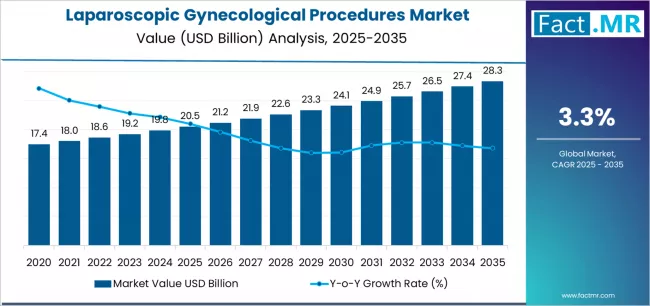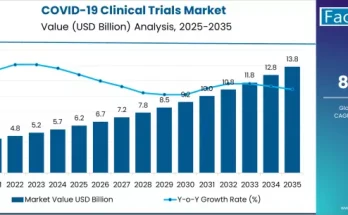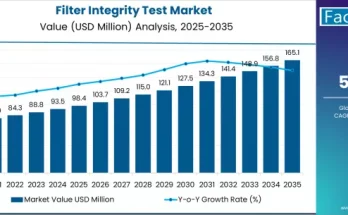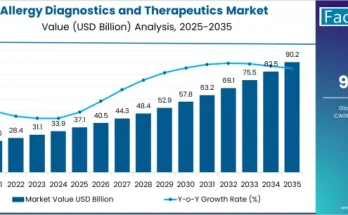The global laparoscopic gynecological procedures market is positioned for significant expansion as demand for minimally invasive surgical solutions accelerates worldwide. According to recent industry analysis, increasing prevalence of gynecological disorders, rising adoption of advanced surgical technologies, and a strong shift toward faster, safer, and cost-effective treatment pathways are shaping the future of laparoscopic women’s health procedures.
As healthcare systems prioritize patient comfort, reduced recovery times, and improved clinical outcomes, laparoscopic interventions are increasingly replacing traditional open surgeries across hospitals, specialty clinics, and ambulatory surgical centers.
Key Market Growth Drivers
Rising Demand for Minimally Invasive Gynecological Surgeries
Minimally invasive techniques—offering smaller incisions, reduced blood loss, and significantly shorter recovery times—are becoming the preferred choice for hysterectomy, myomectomy, endometriosis treatment, ovarian cyst removal, and tubal ligation. Growing patient awareness and wider availability of trained laparoscopic surgeons are further strengthening adoption. Hospitals and surgical centers are upgrading facilities to accommodate advanced laparoscopy equipment, enhancing procedure efficiency and safety.
Increasing Prevalence of Gynecological Disorders
The rising global burden of uterine fibroids, endometriosis, PCOS, infertility issues, and persistent reproductive system complications continues to drive the need for advanced surgical interventions. Laparoscopy remains a gold-standard diagnostic and therapeutic solution, particularly for chronic pelvic pain, adhesions, and fertility-related evaluations.
Technological Advancements Accelerate Procedural Efficiency
Significant progress in 3D laparoscopy, high-definition imaging, robotic-assisted platforms, and enhanced energy devices is reshaping the surgical landscape. These advancements improve surgeon precision, reduce procedural complications, and elevate patient outcomes. The integration of AI-driven visualization, ergonomic instruments, and real-time imaging analytics is expected to further enhance accuracy in complex gynecological surgeries.
Browse Full Report: https://www.factmr.com/report/laparoscopic-gynecological-procedures-market
Regional Growth Highlights
North America: Leading Market with High Technology Adoption
The U.S. remains at the forefront due to strong investments in advanced surgical systems, presence of major medical device manufacturers, and rising preference for minimally invasive gynecological treatments. Favorable reimbursement frameworks and extensive training programs contribute to sustained market dominance.
Europe: Strong Growth Driven by Women’s Health Awareness
European countries show robust adoption of laparoscopic techniques as awareness toward early diagnosis and preventive care increases. Supportive healthcare policies, government-backed surgical innovation, and a well-developed hospital network strengthen regional market expansion.
Asia-Pacific: Rapidly Emerging Market
Growing healthcare infrastructure, rising disposable incomes, and increasing incidence of gynecological disorders are fueling laparoscopic procedure demand in China, India, Japan, and Southeast Asia. Medical tourism and growing investments in multispecialty hospitals further propel regional growth.
Latin America & Middle East: Rising Uptake of Modern Surgical Solutions
Improving access to healthcare facilities, strong focus on women’s health, and ongoing modernization of surgical departments support the steady rise of laparoscopy-based gynecologic procedures.
Market Segmentation Insights
By Procedure Type
- Laparoscopic Hysterectomy – High adoption due to reduced postoperative complications.
- Laparoscopic Myomectomy – Increasing preference for fertility-preserving fibroid removal.
- Laparoscopic Ovarian Cystectomy – Widely used for benign ovarian disorders.
- Laparoscopic Endometriosis Treatment – Preferred for diagnostic and advanced therapeutic care.
- Tubal Ligation & Fertility Procedures – Growing adoption among reproductive-age women.
By End User
- Hospitals – Largest adoption owing to advanced surgical infrastructure.
- Ambulatory Surgical Centers – Rapid expansion driven by cost-savvy outpatient procedures.
- Specialty Gynecology Clinics – Increasing focus on personalized surgical and reproductive care.
Key Market Challenges
Despite strong growth prospects, several barriers continue to affect the market landscape:
- High Cost of Advanced Laparoscopic Equipment: Limits adoption in developing economies.
- Shortage of Highly Skilled Surgeons: Specialized training remains essential for safe outcomes.
- Infrastructure Limitations: Many regions still lack modern surgical environments.
- Procedural Risks: While minimal, potential complications require high procedural precision.
Competitive Landscape
The market features a mix of global medical device leaders and innovation-driven companies focusing on developing precise, safe, and ergonomically advanced laparoscopic tools. Companies are investing in R&D, strategic collaborations, and surgeon training initiatives to strengthen their global footprint. Product portfolios include imaging systems, trocars, graspers, cameras, energy devices, and robotic-assisted surgical platforms.
Prominent Companies Include:
• Medtronic
• Stryker
• Karl Storz
• Olympus Corporation
• Johnson & Johnson (Ethicon)
• CONMED Corporation
• Richard Wolf GmbH
• CooperSurgical
These players emphasize surgical precision, miniaturized instruments, AI-powered visualization, and enhanced connectivity in modern operating rooms.
Future Outlook: Advancing Women’s Healthcare Through Minimally Invasive Innovation
Over the next decade, the laparoscopic gynecological procedures market will continue to expand as hospitals and clinics shift decisively toward minimally invasive surgical solutions. Enhanced imaging systems, robotic-assisted platforms, and AI-integrated technologies will shape the next generation of gynecological care.
Manufacturers that invest in surgeon training, device innovation, and cost-efficient technologies will gain a competitive edge. As global focus intensifies on women’s health, reproductive wellness, and early diagnosis, laparoscopic procedures will remain essential in delivering high-quality, patient-centered care across the world.



